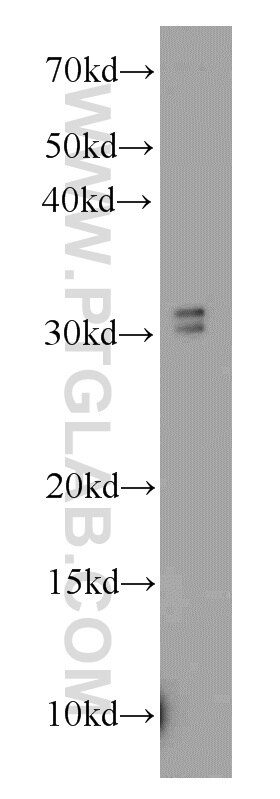Validation Data Gallery
Tested Applications
| Positive WB detected in | HeLa cells, human liver tissue, mouse liver tissue, A431 cells, A549 cells, MCF-7 cells |
| Positive IF/ICC detected in | MCF-7 cells, HeLa cells |
Recommended dilution
| Application | Dilution |
|---|---|
| Western Blot (WB) | WB : 1:500-1:1000 |
| Immunofluorescence (IF)/ICC | IF/ICC : 1:50-1:500 |
| It is recommended that this reagent should be titrated in each testing system to obtain optimal results. | |
| Sample-dependent, Check data in validation data gallery. | |
Published Applications
| IHC | See 1 publications below |
Product Information
14710-1-AP targets MORF4L2 in WB, IHC, IF/ICC, ELISA applications and shows reactivity with human, mouse, rat samples.
| Tested Reactivity | human, mouse, rat |
| Cited Reactivity | human |
| Host / Isotype | Rabbit / IgG |
| Class | Polyclonal |
| Type | Antibody |
| Immunogen | MORF4L2 fusion protein Ag6404 相同性解析による交差性が予測される生物種 |
| Full Name | mortality factor 4 like 2 |
| Calculated molecular weight | 32 kDa |
| Observed molecular weight | 30-32 kDa |
| GenBank accession number | BC056899 |
| Gene Symbol | MORF4L2 |
| Gene ID (NCBI) | 9643 |
| RRID | AB_2297880 |
| Conjugate | Unconjugated |
| Form | Liquid |
| Purification Method | Antigen affinity purification |
| UNIPROT ID | Q15014 |
| Storage Buffer | PBS with 0.02% sodium azide and 50% glycerol , pH 7.3 |
| Storage Conditions | Store at -20°C. Stable for one year after shipment. Aliquoting is unnecessary for -20oC storage. |
Protocols
| Product Specific Protocols | |
|---|---|
| WB protocol for MORF4L2 antibody 14710-1-AP | Download protocol |
| IF protocol for MORF4L2 antibody 14710-1-AP | Download protocol |
| Standard Protocols | |
|---|---|
| Click here to view our Standard Protocols |
Publications
| Species | Application | Title |
|---|---|---|
Front Immunol Risk stratification based on DNA damage-repair-related signature reflects the microenvironmental feature, metabolic status and therapeutic response of breast cancer |





